When reactor performance slips, every shutdown costs more.
Shell Reactor Internals help tackle the root causes of these challenges,
promoting efficiency, cycle life, and stable operations.
The idea of installing new technologies in your key asset can be daunting, but Shell handles the whole process. Discover how our integrated team makes the process easy for you.
Shell reactor internals technologies can help you to unlock the full potential of your reactor. Discover how our team takes an integrated approach to designing, delivering and installing your hardware.





Discover how a low cost hydrocracker revamp delivered 8-figures in additional margin for a large cap NOC.
Download the Case Study
Discover how a series of design innovations unlocked high performance for an ageing hydrocracker.
Download the Case Study
Discover how a low cost hydrocracker revamp delivered 8-figures in additional margin for a large cap NOC.
Download the Case Study
Discover how a series of design innovations unlocked high performance for an ageing hydrocracker.
Download the Case StudyINCREASE PRODUCT YIELDS
Potential Value
*100/t naphtha–diesel spread in a typical hydrocracker
INCREASE CYCLE LIFE
Potential Value
*Upgrade margin of $50/t in a typical diesel hydrotreater
PROCESS HIGHER MARGIN FEEDS
Potential Value
*Light cycle oil upgrade margin is $50/t more than the gas oil upgrade margin
A high performance, low cost investment opportunity
Has your reactor shown signs of high pressure drop or thermal maldistribution? Have you had difficulties in processing renewable feeds or achieving your desired cycle length? Are you under pressure to increase product yields?
Because they are designed to prevent fouling and increase catalyst volume and utilisation, Shell’s latest-generation reactor internals have helped refiners around the world to resolve issues and meet objectives such as these.
And, as they require low capital investment, can be implemented quickly and carry a low investment risk, they offer one of the most compelling response options available to refiners in today’s market.
Stream the webinar now to learn more about Shell reactor internals, and how they could help you to unlock millions of dollars per year from your reactor.
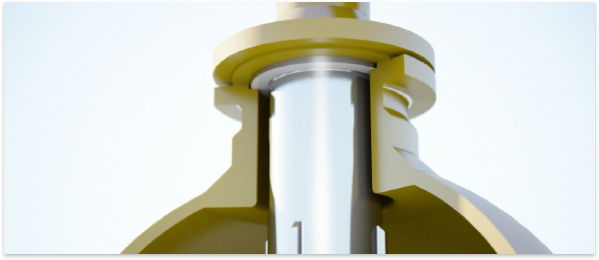
Shell inlet device and inlet pipe breaks the momentum of liquid and gas coming into the reactor and spreads the feed evenly over the internals in the dome at the top of the reactor.
All inlet devices are flexible and can be installed and removed in minutes.
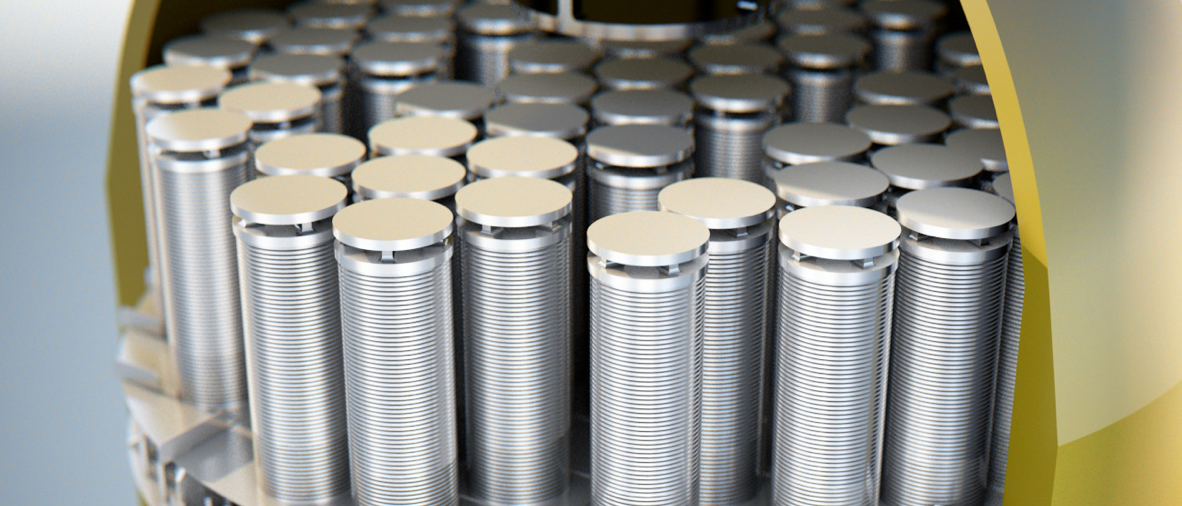
Shell fouling abatement equipment is designed to trap foulants before they enter the catalyst bed and provide general pre-distribution to the HD Tray below. The types of fouling equipment available include:
Shell Filter Trays
Shell Filter and Sedimentation tray (FAST)
Shell Scale-Catching Tray
Shell GPS Tray

Shell High-Dispersion (HD) Trays help to optimise catalysts utilisation by achieving enhanced vapour-liquid and thermal distribution. In addition, HD Trays can:
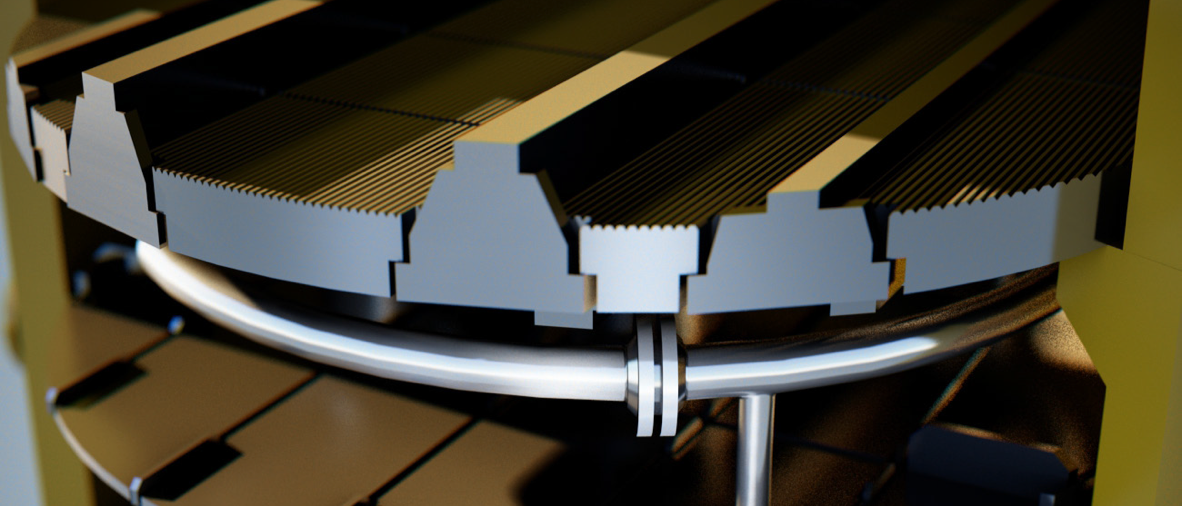
Shell catalyst support grid allow larger and heavier catalyst beds, enable greater fouling resistance and prevent catalyst migration.
Catalyst support beds create advantages in a few ways:

Shell Ultra-Flat Quench (UFQ) Interbed Internals help achieve uniform temperature distribution while collecting all liquid and gas (separately) from the bed and helps ensure near-perfect mixing before releasing it to the next distributor.

Shell bottom basket helps to avoid catalyst migration to the downstream equipment and piping.
For new units, Shell Catalysts & Technologies can design the full reactor vessel to ensure that it works perfectly with the Shell reactor internals and catalyst.
All manways, nozzles, support rings and other aspects will be optimised for interfacing with the internals and safety aspects such as access and egress.
Shell Catalysts & Technologies can provide the design for new thermography to ensure it is all located optimally for measuring bed temperatures and for minimal interference in the bed.
When combing beds, we conduct full thermal stability studies to ensure safe operation of the unit with respect to adequate quench capacity and sufficient exotherm temperature control.
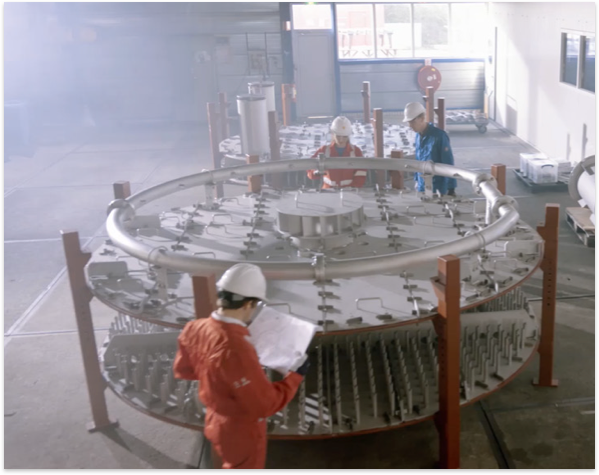
On-site kick-off meeting to ensure the project goes smoothly.
Process design using computational fluid dynamics based on actual temperatures, pressures, flowrates, densities and viscosities.
Mechanical design and engineering using Shell Catalysts & Technologies' best practices.
Customer visit to Shell’s workshop to witness a full mockup of all hardware.
Delivery of reactor internals prior to turnaround.
A detailed schedule provided for full replacement, including scaffolding and demolition time.
Training and supervision of construction contractors to enable safe and efficient procedures.
Sign-off upon completion and hand over to Shell Catalysts & Technologies' catalyst start-up team.
%20(1).png)

Shell inlet device and inlet pipe breaks the momentum of liquid and gas coming into the reactor and spreads the feed evenly over the internals in the dome at the top of the reactor.
All inlet devices are flexible and can be installed and removed in minutes.
Less turnaround time
Safety benefits, eliminating hot work required and no inert entry
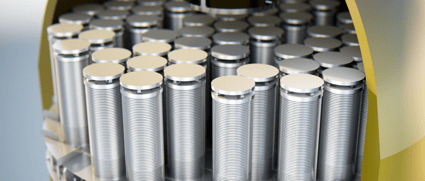
Shell fouling abatement equipment is designed to trap foulants before they enter the catalyst bed and provide general pre-distribution to the HD Tray below. The types of fouling equipment available include:
Shell Filter Trays
Shell Filter and Sedimentation tray (FAST)
Shell Scale-Catching Tray
Shell GPS Tray
Enhanced cycle life
Shorter catalyst loading time
Quick cleaning
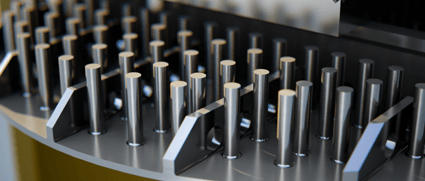
Shell High-Dispersion (HD) helps to optimise catalysts utilisation by achieving enhanced vapour-liquid and thermal distribution. In addition, HD Trays can (1) enable almost 100% wetting of the catalyst from the top of the bed, unlike bubble cap-type and other distributors which typically only wet a fraction of the top of the bed; (2) enable longer beds to be installed while still preventing radial maldistribution.
Utilises nearly 100% of the catalyst inventory
Large feed rate flexibility
Wide operating range
All distributive grading material below the quench can be removed and catalyst can be loaded up to 100 mm (4") below the nozzles
Very large manways enable fast catalyst loading and safer bed access/egress
Increased catalyst utilisation
Enhanced cycle life
Quick cleaning
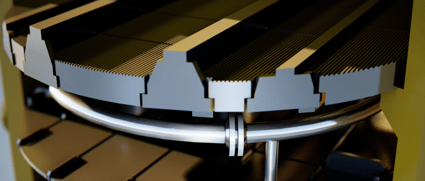
Shell catalyst support grid allows for larger and heavier catalyst beds, enables greater fouling resistance and prevents catalyst migration.
Catalyst support beds create advantages in a few ways:
V-wire screens supported by zero to six support beams, depending on the reactor diameter
Lowest single layer of 6mm (1/4") inert balls
All items are loose (no bolt/nuts) with large manways for good access
Main beams extend upward into the catalyst bed to minimise interbed spacing
V-space enables self-cleaning
No loose layers of wire mesh, no overlay is necessary for the wire-mesh pads, no knitting is required
Typical design mechanical load: 6 bar (87 psi) - enables longer cycles if the pressure drop across a bed increases
Very large manways enable fast catalyst loading and safer bed access/egress
Longer cycle life due to negligible dP over the grids
Reduced turnaround times due to maintenance advantages

Shell Ultra-Flat Quench (UFQ) interbed internals help achieve uniform temperature distribution while collecting all liquid and gas (separately) from the bed and helps ensure near-perfect mixing before releasing it to the next distributor.
Integrated with the Shell HD tray and pre-distributor
Allows for very small void spaces
Can be executed with gas quenches, liquid quenches, or both simultaneously
Very large manways enable fast catalyst loading and safer bed access/egress
Low radial temperature gradient helps to maximise cycle life
Ultra-flat design helps maximise the reactor volume that is available for catalyst loading
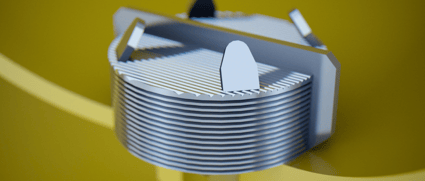
Shell bottom basket helps to avoid catalyst migration to the downstream equipment and piping.
Flat yet robust design helps maximise the volume of catalyst that can be loaded in the bottom dome
Sits loose, with a vortex breaker in the reactor outlet nozzle for fast removal
V-wire construction
Large open area reduces the dP over the bottom basket to next to zero
Designed for 13.7 bar (200 psi)
Helps maximise the bottom dome catalyst inventory
Quick cleaning